Guides
How to Propagate Vinca Minor: Simple Steps for a Lush, Spreading Ground Cover
Have you ever admired the beautiful carpet of glossy green leaves and purple-blue flowers of Vinca minor (also known as periwinkle or creeping myrtle) and wished you could spread that same charm to other parts of your garden? The good news is you absolutely can!
Propagating Vinca minor is easy, rewarding, and one of the best ways to create a lush, low-maintenance ground cover that keeps your garden vibrant year after year. Whether you’re a new gardener or a seasoned green thumb, you’ll love how simple this process can be.
In this guide, we’ll walk you through everything you need to know about how to propagate Vinca minor, from choosing the right method to caring for your new plants as they take root and flourish.
Understanding Vinca Minor
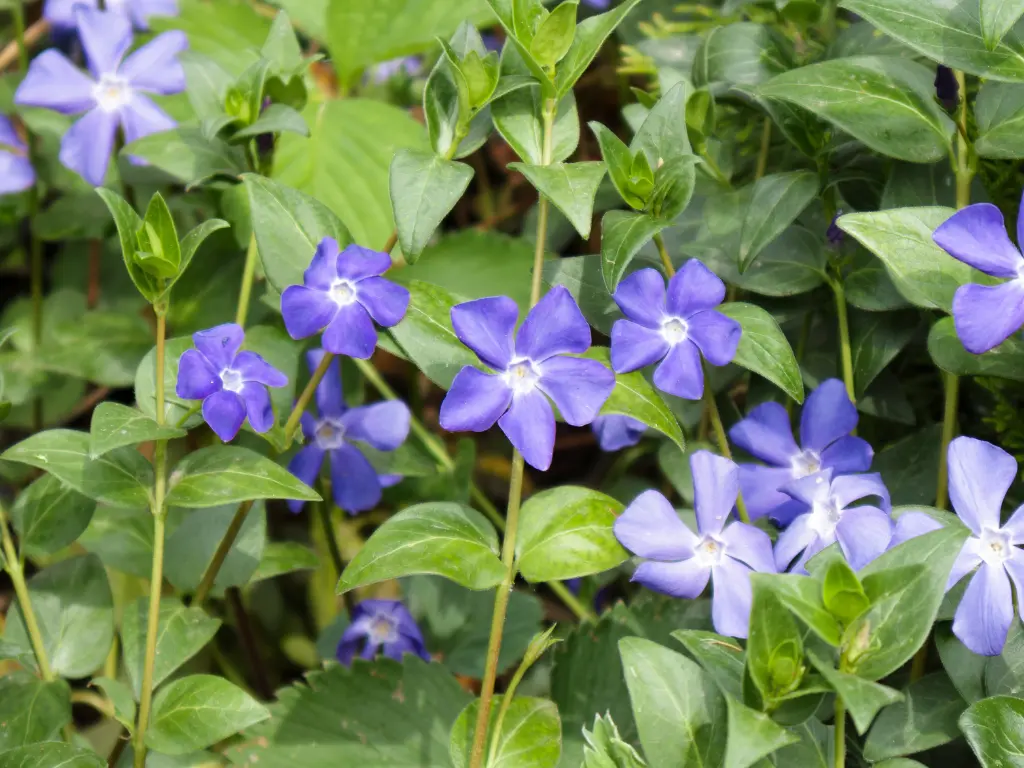
Vinca minor, or periwinkle, is a hardy evergreen ground cover known for its glossy leaves and delicate violet-blue flowers. It’s prized for its ability to thrive in shady areas where other plants struggle, making it a go-to choice for borders, slopes, and under trees.
Unlike many ground covers, Vinca minor spreads through trailing stems that root as they touch the soil. This natural growth habit makes propagation incredibly simple, nature practically does it for you!
It prefers well-draining soil, moderate moisture, and partial shade, though it can tolerate full sun in cooler climates.
The best time to propagate Vinca minor is spring or early fall, when temperatures are mild and the soil stays consistently moist.
You may like:
- How to Grow Vinca Periwinkle: Sprawling Ground Cover Plant for Your Garden
- 9 Best Ground Cover Plants to Prevent Weeds
Essential Tools and Materials
Before you begin, gather your supplies. Having everything on hand will make the process smoother and more enjoyable.
You’ll need:
-
Sharp, clean scissors or garden shears: For cutting healthy stems or dividing plants.
-
Small pots or trays: For rooting new cuttings.
-
Well-draining potting mix: A blend of garden soil, peat moss, and perlite works well.
-
Rooting hormone (optional): Encourages quicker root development.
-
Watering can or spray bottle: To keep soil evenly moist.
-
A shaded, sheltered spot: For young plants to establish roots.
How to Propagate Vinca Minor
There are two simple ways to propagate this plant: stem cuttings or division. Both are effective, so you can choose whichever fits your gardening style.
Method 1: Propagation by Stem Cuttings
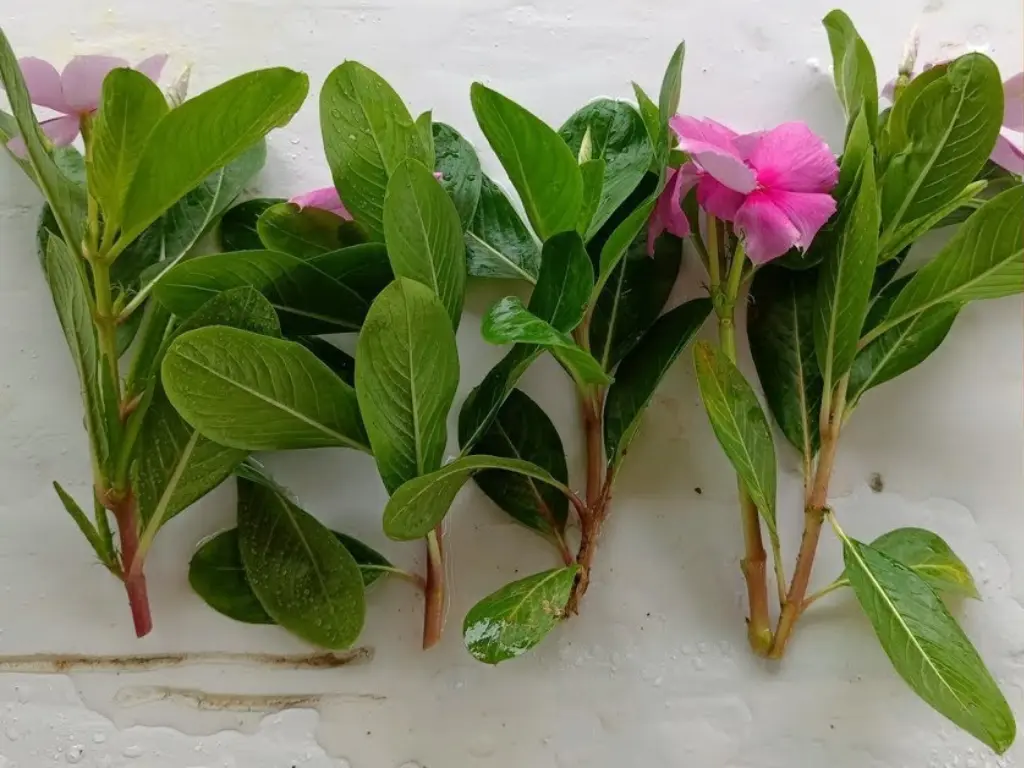
This is the easiest and most popular method and perfect if you want to start new plants indoors before transplanting them outdoors.
Step 1: Select Healthy Stems
Choose vigorous, non-flowering stems about 4–6 inches long. Using clean shears, cut just below a leaf node.
Step 2: Remove Lower Leaves
Gently strip the leaves from the lower half of each cutting to expose the nodes, this is where new roots will form.
Step 3: Apply Rooting Hormone (Optional)
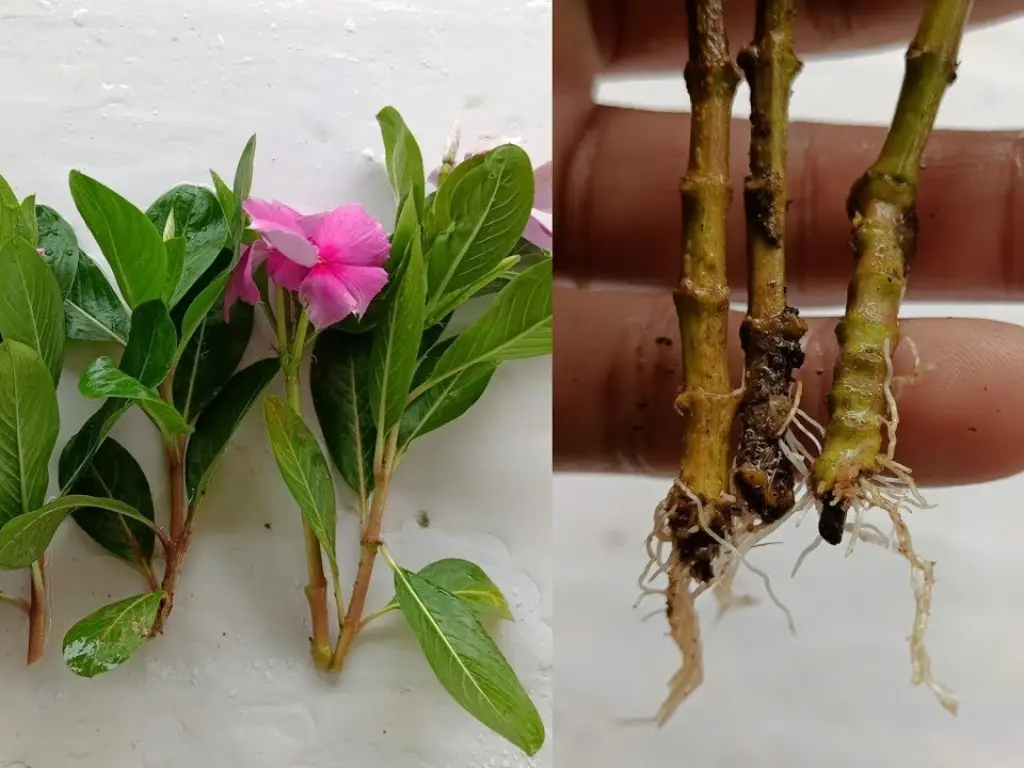
Dip the cut end into rooting hormone powder to encourage faster root growth.
Step 4: Plant the Cuttings
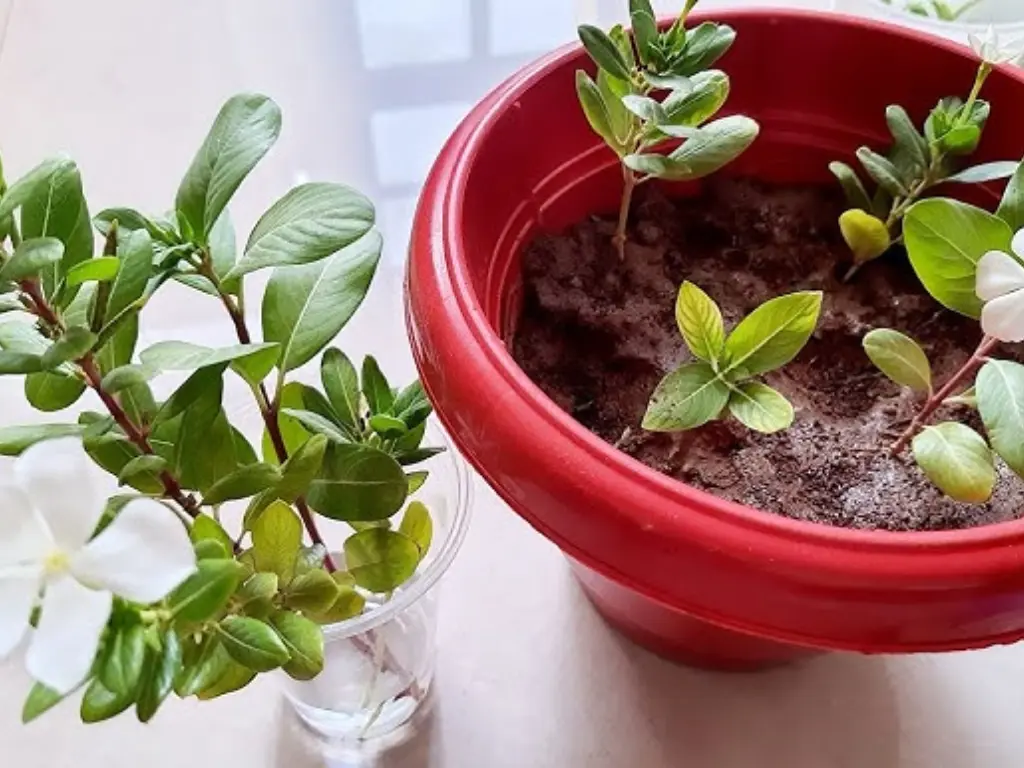
Insert the stems about 1–2 inches deep into moist, well-draining soil. Firm the soil around them to keep them upright.
Step 5: Maintain Moisture and Shade
Keep the soil lightly moist and place the pots in a bright, shaded area, indirect sunlight is ideal.
Within 3–4 weeks, roots should begin to form. Once you see new growth, your cuttings are ready for transplanting outdoors!
Method 2: Propagation by Division
If you already have a mature Vinca minor patch, this method is quick and effective.
Step 1: Lift the Parent Plant
Carefully dig up a small section of the plant, keeping as many roots intact as possible.
Step 2: Separate Root Clumps
Using your hands or a garden knife, gently separate the plant into smaller clumps, each with roots and a few healthy stems.
Step 3: Replant Immediately
Place each division into prepared soil or pots, ensuring the roots are covered and firmed in well. Water thoroughly.
This method is ideal for rejuvenating older plantings while expanding your ground cover at the same time.
Aftercare: Helping Your New Plants Thrive
To keep your young periwinkle happy and healthy:
-
Water Consistently: Keep the soil evenly moist during the first few weeks. Once established, Vinca minor becomes drought-tolerant.
-
Provide Partial Shade: Protect new plants from harsh midday sun.
-
Feed Lightly: After a month, apply a diluted, balanced fertilizer once a month during the growing season.
-
Mulch to Retain Moisture: A light layer of mulch helps keep the soil cool and encourages steady growth.
-
Trim Occasionally: Pinch or trim tips to encourage bushier, denser coverage.
Pro tip: If your new plants look a little limp right after planting, don’t worry, they’re just settling in. Keep the soil moist and they’ll bounce back beautifully!
Common Mistakes to Avoid
Even though propagation is simple, these small missteps can slow your success:
-
Overwatering: Too much water can cause root rot. Keep soil moist, not soggy.
-
Too much direct sun: Harsh sunlight can scorch new cuttings.
-
Neglecting humidity: Dry air can cause leaves to wilt before roots form.
-
Using old or weak stems: Always choose fresh, healthy growth for propagation.
Frequently Asked Questions (FAQs)
Can I propagate Vinca minor in water?
Yes! Place stem cuttings in a glass of water and change it every few days. Once roots are about an inch long, transfer them to soil.
When is the best time to propagate?
Spring or early fall – mild temperatures and steady moisture help roots establish faster.
How long does it take for cuttings to root?
Usually 3-4 weeks, depending on warmth and humidity.
Will my propagated plants flower the first year?
Probably not, they’ll focus on building strong roots first. Expect blooms the following spring.
Do I need to use rooting hormone?
It’s optional, but it helps speed up rooting and increases success rates.
Conclusion
Propagating Vinca minor is a delightful way to multiply the beauty of this graceful, evergreen ground cover. With just a few simple steps, you can create new plants that spread effortlessly, filling your garden with life and color.
Be patient, stay gentle with your cuttings, and soon you’ll have a lush carpet of green that thrives for years to come.
Happy gardening and may your periwinkles keep spreading their charm wherever they grow!

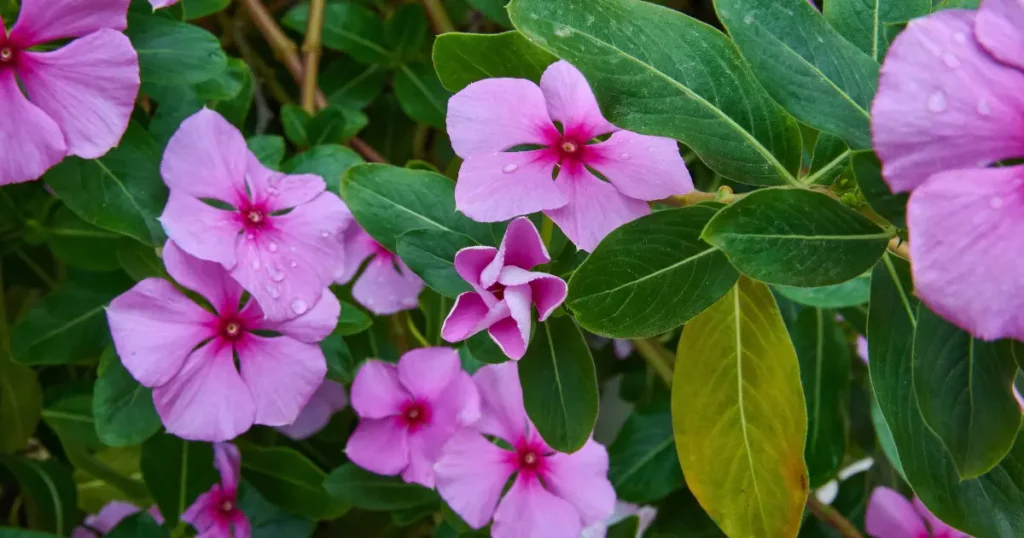
7 Vegetables to Plant in December for a Bountiful Winter Harvest
Winter gardening is a challenge many new gardeners shy away from. But if you’re among [...]
Dec
9 Common Christmas Cactus Problems and How to Fix Them
Have you ever walked past your Christmas cactus and wondered why it suddenly looks sad? [...]
Nov
Swedish Ivy Care: How to Grow a Healthy, Thriving Plant
Have you ever looked at your Swedish Ivy and wondered why the leaves are turning [...]
Nov
Avoid These 10 Garlic Planting Mistakes for Bigger, Healthier Bulbs
Growing garlic at home is one of the most satisfying things a gardener can do [...]
Nov
How to Prevent Christmas Cactus Bud Drop: Tips for a Healthy Bloom
Have you ever noticed your beautiful Christmas cactus (Schlumbergera) starting to lose its buds just [...]
Nov
Discover 7 Stunning Types of Night-Blooming Cereus
Have you ever waited for a flower that only opens at night and then disappears [...]
Nov